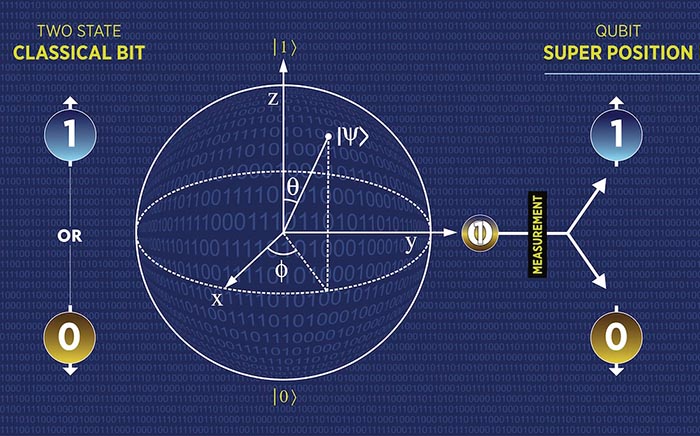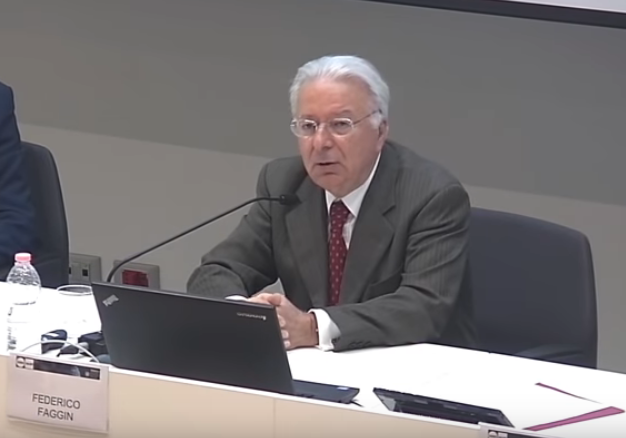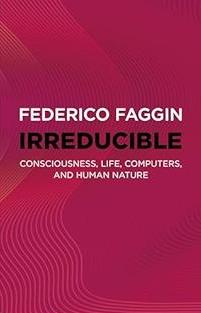|
home | what's new | other sites | contact | about |
||||
|
Word Gems exploring self-realization, sacred personhood, and full humanity
Quantum Mechanics Dr. Frederico Faggin What is quantum information?
return to "Quantum Mechanics" main-page
... something he and physicists do agree on – namely that information, specifically quantum information, is the core of everything. Information, not atoms, not electrons, not anything material, is the basic ‘stuff’ of the physical world. What is the source of this information? Again, Faggin and the classical (as he calls them) scientists are in agreement: quantum information emerges from a unified field... So, what is information? Quantum Information appears as readings on the sophisticated instruments physicists use to study quantum behaviour (such as CERN’s hadron collider). These provide data that the scientists employ to yield and test complex mathematical descriptions of what has been observed. For those who adopt a physicalist model, these mathematical models are essentially true descriptions of reality, some of them even going further and suggesting that they are reality – that reality is mathematics. But Faggin argues that they are making a fundamental epistemological error, confusing the map with the territory. And further: that the territory their models describe is not in fact the deepest physical level of the world we see around us, he argues, but rather the most primitive form of the world we experience inside us. He states: ‘I am convinced that […] quantum physics does not describe outer but inner reality’ (p. 182). This is an astonishing assertion: quantum physics models psychic rather than physical phenomena! How can he justify such a radical claim? To flesh out these ideas into a fully comprehensible scientific theory, Faggin has worked with the physicist Giacomo Mauro D’Ariano [/], a world expert in quantum information. Quantum information is based on ‘qubits’ which can take on an infinity of different values. This is a huge contrast to the binary ‘bits’ on which computer systems are based, which are severely limited (zero or one; on or off). The information you are reading on the screen in front of you right now is made up of lots of such bits. Likewise, the information quantum physicists work with is limited to what can be expressed in bits, and so their measurements and models necessarily cannot fully express the richer quantum reality they study and represent. If a quantum system is filled with qubit information that in principle cannot be fully known by anyone outside it, what is the point of it? After all, information informs, and if quantum information cannot be fully communicated to the scientists who are working with it, who or what can be informed? The answer has to be the quantum system itself (p. 242). D’Ariano and Faggin’s bold assertion is that quantum systems are self-aware: they are conscious. In fact, they go further and argue that consciousness is a quantum phenomenon.[3] Their work has led them to conclude that ‘the phenomenology of a conscious experience is that of a pure quantum state as both are “irreproducible yet knowable to the system feeling it”’ (p. 167). In this way, they explain one of the great mysteries of quantum mechanics, which is its unpredictability (Is Schrodinger’s cat alive or dead?). Of course, quantum behaviour is unpredictable because a key characteristic of a conscious entity is that it has free will. It is also aware of its surroundings and will respond to the information it receives from other conscious entities, such as whether it is being observed. Hence the puzzling behaviour of quantum phenomena becomes explicable and understandable.  The difference between ‘bits’ and ‘qubits’ is that while bits have only two possible states, qubits exist at the level of quantum reality in an infinity of possible states. But when they are subject to measurement they appear in the physical world in one of two states. Image: Vallabh Soni/Shutterstock
Knowledge of ‘That’ and Knowledge of ‘How’. Understanding the difference between these modes of knowing is perhaps difficult for the speaker of English in a way that it is not for the German, the French or the Italian. In these languages there are two words for ‘to know’: in German kennen and wissen, in French connaître and savoir, in Italian conoscere and sapere.[4] The first of each pair refers to knowing through experience; the second to that which is known indirectly by being told or by reading about something. I can tell you that a suitcase weighs 25kg and so you wissen that it is heavy. Then you try and pick it up and now you kennen – comprehend – how the suitcase ‘really’ is heavy. Tellingly in German science is named Wissenschaft.
|
||||
|
|

